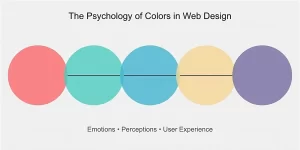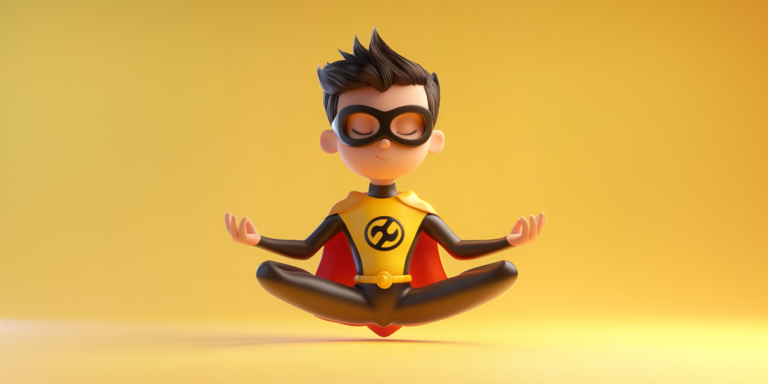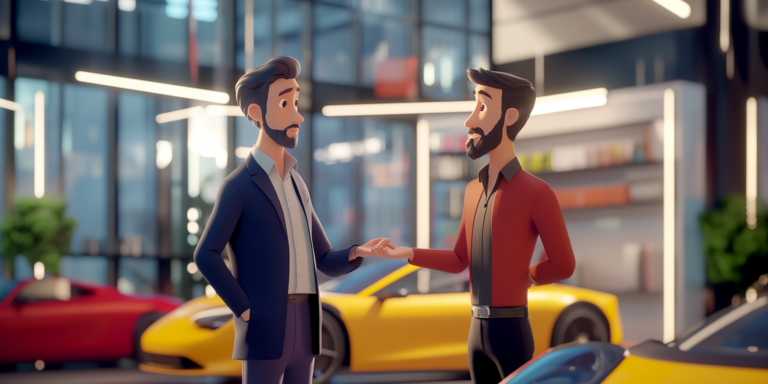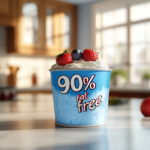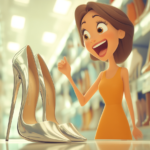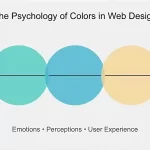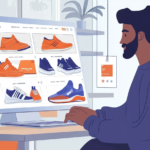Hey there, savvy internet surfer! 👋 Ever catch yourself mindlessly clicking “Add to Cart” on a website, only to wonder later, “How did I end up buying all this stuff?” Well, my friend, you’ve just been color-manipulated. Welcome to the wild world of color psychology in web design, where every hue is out to seduce your wallet!
Today, we’re pulling back the curtain on this technicolor trickery. By the time you finish reading, you’ll be seeing the internet in a whole new light—or should I say, a whole new color palette? Let’s dive in and learn how to spot these sneaky design tactics that are playing ping-pong with your emotions and your mouse clicks.
The Rainbow Connection: How Colors Mess With Your Mind
First things first: your brain is kind of a drama queen when it comes to colors. It’s all, “Ooh, red? Must be important!” and “Blue? I suddenly feel like buying a yacht.” But before you start accusing your cerebral cortex of being basic, let’s break down how this color witchcraft actually works.
Red: The “OMG, I Need This NOW” Color
Picture this: you’re casually browsing online when BAM! A red “Sale” sign appears. Suddenly, your heart’s racing faster than Usain Bolt on espresso. That’s red doing its thing, folks. It’s the adrenaline junkie of the color world, associated with urgency, excitement, and impulse purchases.
How to spot it: Look for red in sale banners, countdown timers, or “limited time offer” buttons. If you see red, take a deep breath and ask yourself, “Do I really need this, or am I just caught up in the excitement?”
Blue: The “Trust Me, I’m a Professional” Hue
Ah, blue – the color of half the corporate world. It’s no coincidence that Facebook, Twitter, and LinkedIn all rock this hue. Blue screams trust, professionalism, and “I definitely won’t steal your data” vibes.
How to spot it: Notice how many financial, tech, and healthcare websites use blue. It’s meant to make you feel safe and secure. Before entering sensitive information, double-check the site’s legitimacy, regardless of how trustworthy it looks.
Green: The “Eco-Friendly, Wallet-Friendly” Shade
Green is like that friend who’s always trying to get you to go vegan and recycle more. It’s associated with nature, health, and wealth. So if you’re suddenly craving organic kale smoothies while browsing, you might be under the influence of green.
How to spot it: Green is often used on health, wellness, and eco-friendly product sites. It’s also popular in financial services to suggest growth and prosperity. Ask yourself if the product is truly as “natural” or “beneficial” as the color suggests.
Yellow: The “Look at Me, I’m Sunshine!” Color
Yellow is the golden retriever of colors – it’s happy, energetic, and demands attention. It’s great for highlighting important info or adding a pop of cheerfulness.
How to spot it: Yellow is often used for warnings, notifications, or to draw your eye to specific elements. If you see a yellow button or banner, it’s probably trying to grab your attention. Take a moment to consider if it’s really worth your focus.
Layout Lowdown: It’s Not Just About Pretty Colors
Alright, color detectives, let’s talk layout. Because even the perfect color scheme can’t save a website that’s messier than a toddler’s art project.
The F-Pattern: Not Just for Report Cards Anymore
Most people scan websites in an F-shaped pattern. So, sneaky designers put important stuff along the top and left side. It’s like the VIP section of your web page.
How to spot it: Notice where your eyes naturally go when you first land on a page. Are you being led to certain elements or calls-to-action? Be aware of how the layout is guiding your attention.
White Space: The Introvert of Web Design
White space (or negative space) is like the quiet kid in class who turns out to be a genius. It gives your eyes a chance to rest and can make certain elements stand out more.
How to spot it: If a website feels clean and easy to navigate, it’s probably using white space effectively. But also be aware that this can make certain elements (like “Buy Now” buttons) pop even more.
Call-to-Action Buttons: The Divas of Your Website
CTA buttons should be like Beyoncé at a karaoke night – impossible to ignore. They often use contrasting colors to stand out.
How to spot it: Look for buttons that pop out from the rest of the page. They’re designed to catch your eye and encourage clicks. Before you click, ask yourself if you really want to take that action.
The Grand Finale: How to Outsmart the Color Wizards
Now that you’re armed with this rainbow of knowledge, here are some tips to make more conscious decisions when browsing:
-
Take a breather: Before making a purchase, close the tab and come back later. Those urgent red sales won’t seem so urgent after a cup of coffee.
-
Question the feels: If a website is making you feel a certain way, ask yourself why. Is it the content, or just clever color use?
-
Comparison shop: Don’t let one site’s color scheme sway you. Check out competitors to get a balanced view.
-
Trust, but verify: Just because a site looks professional (thanks, blue!) doesn’t mean it is. Always check reviews and credentials.
-
Sleep on it: For big purchases, give yourself a day to think it over. That green “eco-friendly” product might not seem so essential in the morning.
Remember, folks, great web design is like a perfect cocktail – it’s all about finding the right mix. Now that you know the secret ingredients, you can enjoy the flavor without getting a psychological hangover.
Stay savvy out there, and may your future online shopping be filled with conscious clicks and color-aware choices! 😉


